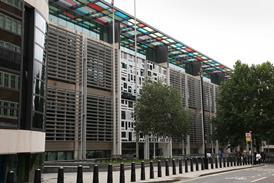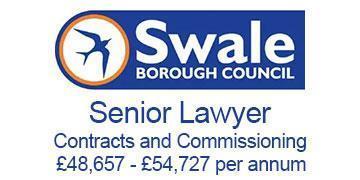The publication of the Legal Services Board’s report into the Solicitors Regulation Authority’s handling of the collapse of SSB should be a wake-up call to parliament triggering an urgent (and, frankly, long overdue) review of the structure of our regulatory regime.

The report itself caps a series of failures by almost everyone in the civil justice process and the regulatory bodies which has led to real harm to individuals. That should not be forgotten in the rush to apportion blame – particularly when there is acknowledged fault on the part of a regulator whose powers expressly exclude the power to make any compensatory award (outside of the compensation fund rules).
The SSB saga is a sorry tale in which clients were treated as commodities and flung into a system they did not understand only to be badly let down by the firm, its experts, ATE coverage, ombudsmen and regulators. It should not escape anyone’s notice that a number of the failings identified in the report took place at a time when the SRA was passing its LSB audits and one must also question how that can have been possible given the issues identified.
While it is tempting to look at SSB in isolation and cast aspersions at individuals or organisations which oversaw specific failures, there is a wider picture which should be sparking much wider public debate about the crucial issues of access to justice, the unintended consequences of commercialisation of the law, the role of experts, insurers and lawyers and what we expect of regulators and the regulated community.
Read more
Since the SRA was established and took primary responsibility for regulatory activities in 2007, there have been a series of changes to the regulatory landscape – some at the direction of the SRA, some pushed by interested parties such as insurers, but more stemming from societal change and legislation. Each change has been considered in isolation with no real attempt to assess whether the overall regulatory regime is fit for purpose.
It is time to take a step back and design a regulatory system that works effectively and efficiently for modern practice, modern clients and modern justice. The reality is that the Solicitors Act 1974 was established at a time when the profession self-insured its failings, all solicitors – whether sole practitioners or partners - were personally liable for debts of their practice and missing client funds, partnerships could not exceed 20 people, solicitors could not advertise or fee share and referrals were strictly regulated.
Modern practice has changed. Incorporated practices were introduced by the Administration of Justice Act 1985 but the Law Society’s powers to regulate them were bolted on to the regime under the 1974 Act and were of limited application for a long time. Until the introduction of LLPs in 2003, incorporated practices were few and far between. Since then, there has been steady commercialisation of practice with rules on referral fees and advertising being scrapped, entity regulation becoming the default position from 31 March 2009 and unlimited partnerships becoming the exception rather than the norm.
Add to all of that the almost complete annihilation of civil legal aid, the compromises made to seek to offset the impact of that on access to justice, commercial interests of insurers and funders, the ineffectiveness of certain types of consumer protection schemes and the front loading of costs necessitated by the introduction of the CPR and you have a huge gap between the existence of rights and the effective ability to enforce those rights.
Although there have been significant changes to regulation during this time, much of it has been tinkering around the edges, with little appetite for more significant reform. The LSA imposed requirements to split representative functions from regulatory functions and gave us the Legal Ombudsman and the Legal Services Board but it did not make fundamental changes to the scope and purpose of regulation itself. In particular, it continued to separate regulation from compensation – a position which still generates misconceptions today. Many clients who complain to the SRA believe that the SRA can and should somehow ‘fix’ the problem – by which they usually mean compensate for it or mandate firms to take particular action at an individual transaction level.
And whilst it is true that the SRA mandates that firms have the most comprehensive insurance available pretty much anywhere and operates the compensation fund, the reality is that the vast majority of the SRA’s work has nothing to do with compensating victims of harm or providing means of restorative justice.
The scale and pace of recent scandals – in which I include the role of lawyers in the Horizon debacle, Axiom Ince, SSB and a number of high profile failed prosecutions which have decimated lives unnecessarily – make the case for reform very clear.
At minimum there needs to be an urgent review of the scope of regulators’ roles and the regulatory tools used to ensure confidence in the professions. In the case of the SRA, the main regulatory toolkit– intervention, practising certificate conditions and section 43 orders as well as sanctions– are, in my view inadequate and do not meet modern needs.
As a profession, we well know that our collective reputation is our greatest asset. We should be calling for a new approach to regulation – requiring changes to primary legislation - which focusses on working with the regulated community to ensure good outcomes for clients.
The SSB scandal has been brewing for a long time and there are lots of contributing factors. While the SRA could undoubtedly have made better decisions on the way, let’s not pretend that those failings are the only issue which need to be addressed.
Susanna Heley is a regulatory expert and legal director with Russell-Cooke































7 Readers' comments